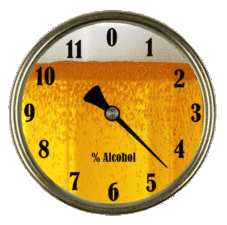 If you’re standing at a party and you see someone who is practically falling down drunk, you know they shouldn’t get behind the wheel. If they tried to drive, you’d probably feel confident taking their keys away from them. But what if you see someone who has been drinking, but they aren’t really exhibiting the signs of being drunk? Do you stop them from driving too?
If you’re standing at a party and you see someone who is practically falling down drunk, you know they shouldn’t get behind the wheel. If they tried to drive, you’d probably feel confident taking their keys away from them. But what if you see someone who has been drinking, but they aren’t really exhibiting the signs of being drunk? Do you stop them from driving too?
For most people, the answer isn’t as easy as yes or no, and that’s the reason why so many people get behind the wheel while buzzed. Buzzed driving is defined as driving with a blood alcohol concentration (BAC) of .01 to .07, and although you’re technically under the legal limit for driving, driving while buzzed can be just as dangerous as driving while drunk.
Research done by the University of California, San Diego found that drivers who are buzzed are more likely to be the sole blame for fatal car crashes than sober drivers. They also found that the transition between buzzed driving and drunk driving was a smooth one, meaning there is no jump in drunkenness or immediate downturn in driving skills – as blood alcohol concentrations go up, driving skills steadily go down hill.
Yet people all across the United States believe that, as long as you stay under the legal limit you’re OK to drive, and that’s why the Ad Council began creating public service announcements (PSAs) like this one. They’re designed specifically to change attitudes about the dangers of buzzed driving.
[youtube https://www.youtube.com/watch?v=6OVcDtEvhhU]
People know you shouldn’t drink and drive, but with over 10,000 people killed in impaired driving crashes every year, it’s clear they’re still making the choice to get behind the wheel. Unless you have a breathalyzer in your vehicle, you have no way of knowing what your BAC is before you drive, so if you want to stay safe, don’t drive after drinking, period.